Emily Seebohm opens up on her harrowing battle with eating disorder
When Emily Seebohm stood on the dais in Tokyo no-one knew the full hell of what she had been through in her battle to conquer an eating disorder. This is her courageous story.
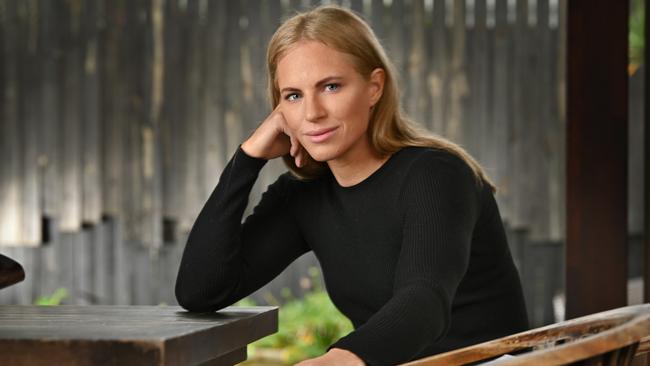
Olympics
Don't miss out on the headlines from Olympics. Followed categories will be added to My News.
There was a time when nearly all of Emily Seebohm’s waking thoughts were engrossed by how she could become thinner.
On her quest to become “smaller”, she would crush through five kilometres in the pool, sometimes six, then she would lift weights for an hour and following that she would quietly head to the gym for a cardio session to burn more calories.
In the afternoon she was swimming again, churning through another five kilometres. By nightfall she was back in the gym for another extra session. Through the day she would barely eat. Most nights she would fall into bed starving.
When Seebohm stood on the dais at Tokyo, a hard-fought bronze around her neck and a relay gold medal for her heat swim, no-one really knew the full hell of what she had been through in her battle to conquer an eating disorder.

It’s Seebohm’s strength to fight through this brutal chapter of her life, one which almost cost her swimming career, that makes the fact she made her fourth Olympics and claimed two medals even more remarkable.
The 29-year-old gives this insight into her journey to Tokyo because she believes her story is one that can encourage a positive change in her much-loved sport. It’s also a story she will be taking into schools as part of her Your Dreams, Your Future workshops.
“I am telling my story as honestly as I can because I think it’s important to not sugarcoat the truth,” Seebohm says.
“Yes I made it to four Olympic Games but it was a really tough journey. Maybe telling my story in this way can bring about a little bit of positive change and maybe even help some of the younger athletes coming through the system.”
It was at the start of 2019, when a swimming official commented on her body, which triggered a year-long spiral into an eating disorder.
“They said the only way I was going to do better than I’d ever done was to be smaller than I was,” Seebohm says.

“That was the way that it was put to me and those words became stuck in my brain.”
It was not just said once to Seebohm, but on “several” occasions that the “only way” she was going to perform better, was if she was thinner. It was harsh and brutal and at the time she didn’t even question it.
“I just took that on board and thought; ‘yeah, OK, that makes sense to me, I guess I just need to be thinner,” Seebohm recalls.
Thinner would be faster — it sounded logical to her and there was no one telling her otherwise. Having just come out of a tough relationship break-up at the end of 2018, Emily was already in a fragile state and had already lost a lot of weight and she was now being told that in order to swim faster she needed to lose more.
Seebohm knew that this meant she was going to have to go to the “next level”.
And Seebohm, a voracious trainer, who had been making the Australian swim team since she was 14, took on this next challenge of extreme weight-management with a vengeance.
“I was really willing to do whatever it took, I was told to lose weight and I was going to do it,” Seebohm said.
She would take on extra exercise sessions to distract her mind from the omnipresent ‘hunger’ she felt. “I trained all the time so I didn‘t think about food,” she says. “It really took up most of my time.”
But in the moments where she was not distracted by exercising, she would realise she was “starving”, and then she would end up bingeing on packets of food to satiate herself. Then she felt guilty and this would lead to purging. She also abused laxatives. She was weighing herself constantly.
And ultimately, amongst this vicious cycle she found herself in, her self-belief and self-worth started to erode. She became withdrawn and felt a deep sadness. “My world just wasn’t as bright and the harder I tried the worse I felt,” Seebohm said.
She said her “courageous self” that had taken her to three Olympic games, three world championships, that had seen her make every Australian swim team since she was a young teen, was suddenly nowhere to be found.
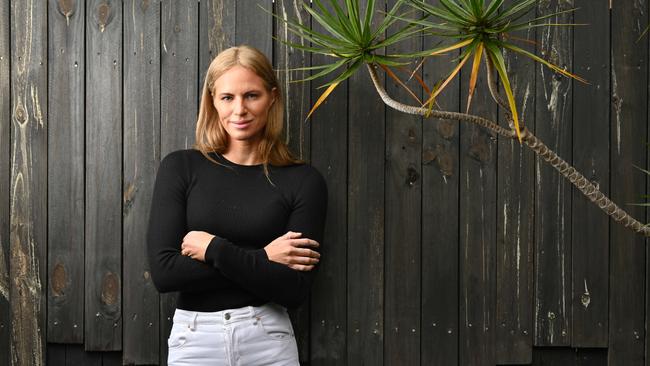
Emily Seebohm, one of Australia‘s most decorated swimmers, a world record breaker, was stuck in a cycle which had crippled her once strong mental state.
In June 2019 a fragile Seebohm turned up to the Australian world championship team trials in Brisbane. She turned up even though she knew her form was low and she probably wouldn’t make the cut.
“I’d lost so much confidence in my swimming and in my life in general, it was such a low point in my life, nothing was working. Even though I felt terrible I kept pushing though — it was important to be there and I was going to give it everything,” she said.
She had been the most dominant backstroker for Australia for the past decade. For the first time in her career she didn’t qualify for either the 100m or 200m backstroke and she wouldn’t get a chance to defend her world title. She was devastated.
“I’d made every team I’d ever tried before,” Seebohm said.
“So for me that was a massive let down. I felt so disappointed in myself that I couldn’t do it because I knew physically I could – I just didn’t have enough strength, enough courage in myself ... and that’s fine I guess it was what it was.”
It was fine, because Seebohm would use the darkest moments of her career to rebuild.
It was another day of starving when Seebohm decided she had enough.
“It came to a point where I was not losing weight anymore and I was just like; ‘what‘s the point? I’m struggling, I’m always hungry’,” Seebohm said.
“I called up a dietician and made an appointment.”
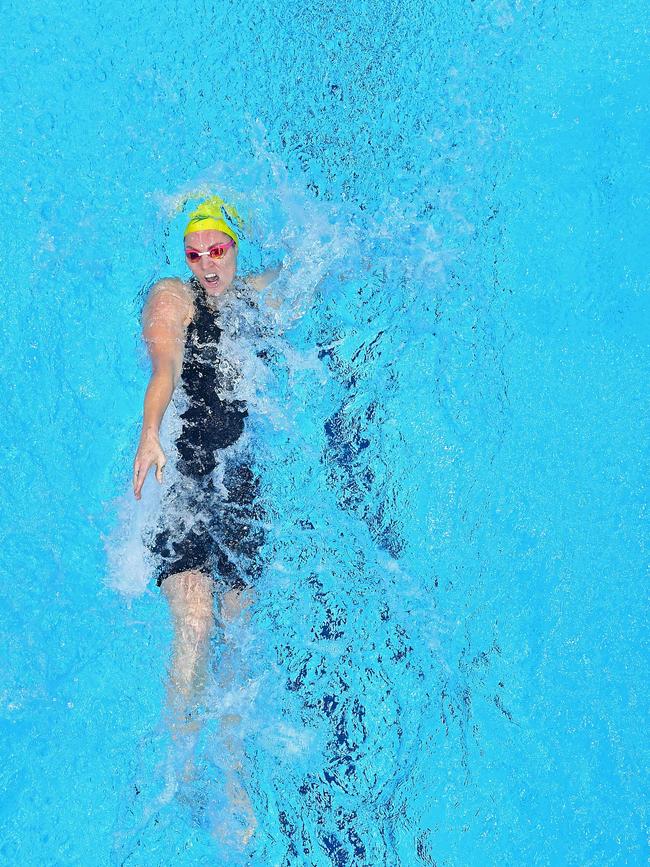
Her dietician was also a marathon runner, so she understood the athlete’s mindset and they met twice a week to unfurl Seebohm’s situation.
“When I explained things, I always thought I sounded so silly, like to have gotten so deep into it and to feel the things that I felt about food but she was just very reassuring,” Seebohm said.
The dietitian listened. She suggested small changes to the way Seebohm approached her relationship with food. She learnt to feed herself before she was in a starving state.
“It was almost like retraining your brain to do what you’re meant to do anyway.”
The other instrumental change to her life was to join up with decorated swimming coach Michael Bohl. During those devastating 2019 trials she met up with Bohl, who agreed to guide her at his Gold Coast-based squad on the proviso that he wasn’t going to coach just so “she could go to her fourth Olympics”.
“You’ve got to put in the work,” Bohl said to her. Seebohm agreed. “I didn’t want to relax off the back of what I had done before.”
Last June she triumphantly made the Australian team.
“I felt so much relief, I thought; ‘I have pushed for this and I have really turned my life around’,” Seebohm thought to herself when she made the team.
“I went to Tokyo with the intention of doing the best job I could.”
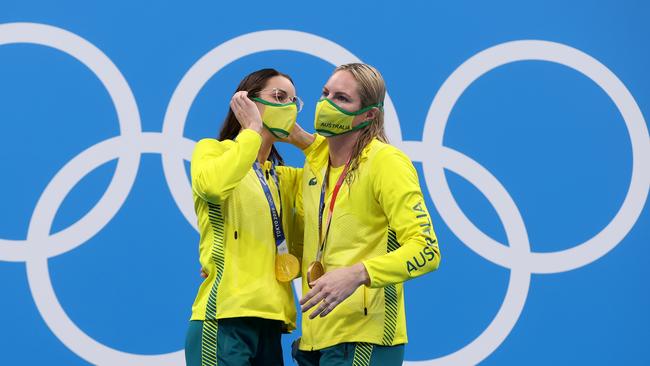
In Tokyo she was “right near” her best. At the Olympics Seebohm finished fifth in the 100 back, won bronze in the 200m backstroke, and a heat swim in the 4x100m medley relay earned her another Olympic gold medal. The Tokyo Games completed her fightback from the dark times of 2019.
Seebohm, who up until 2019 hadn’t suffered an eating disorder, said it was time for a conversation around the way young women and girls are spoken to about their weight.
“I think every year we kind of need to reassess what we‘re saying and how we are saying it because what might have been ‘normal’ 10 years ago is not okay anymore – words can be really damaging,” Seebohm said.
“We need to keep changing and evolving. To make things better and make sure the (swimming environment) is not as daunting or scary. It’s important to see the big picture and recognise what other things the person may be going through.”
Seebohm also said that more needed to be done to explore if there really was a correlation between a swimmers’ size and speed.
In Tokyo she looked around the pool and noticed she was surrounded by all different body shapes, sizes and weights. Winning medals of every colour.
It reinforced to her, what she knew all along, that super thin doesn’t mean super fast.
“If we look at Olympic medalists, they’ve all got different body shapes, there’s not one ideal shape that guarantees medals - the only thing we have in common is our fitness both mental and physical,” she said.
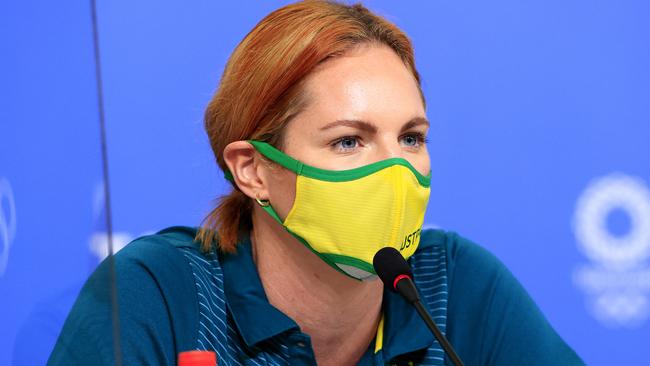
Swimming Australia is currently conducting their own review into their culture. Seebohm believes that only positive change can come from frank conversations and telling stories like hers.
“The more we can talk about things that we don‘t agree with, the better the support will be from it,” she said.
“I think as long as we can keep improving the sport for the next generation that comes through and for those of us still here. That‘s so important, I think that we always need to keep trying to get better and to do things differently.
“I think that‘s just something as athletes that we’re always trying to do, and that’s something that I do constantly for myself and for my swimming. So why not try to improve everything in the sport that we can?”
As for her swimming beyond this year? She is still working out where her head is on it all. For now, it’s time to relax and reflect. It’s been a long Olympic campaign.
“I performed well at fourteen and I performed well at twenty nine,” she says. “I really listen to my body and I‘m lucky that I’ve never had any massive injuries. My body’s still very capable of doing what it needs to do — I don’t think my body is done. It’s just whether my mind can keep up with it,” she laughs.
“I‘m definitely not ruling anything out because I think I’ve proven that anything’s possible.”
For confidential support call Lifeline: 13 11 14



